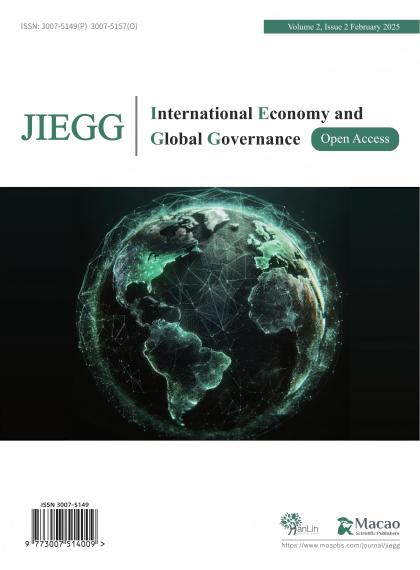-
McFaul, M. (2020). Cold War Lessons and Fallacies for US-China Relations Today. The Washington Quarterly, (4): 7-39.
-
Nye, Joseph S. (2022). How not to deal with a rising China: a US perspective. International Affairs, (5): 1635-1651.
-
Schweller, R. (2022). An Emerging World that Defies Historical Analogy. In Polarity in International Relations: Past, Present, Future, eds. by Græger, N., Heurlin, B., Wæver, O., Wivel, A. Cham: Palgrave Macmillan.
-
Yin, J. (2020). The Cold War analogy’s misrepresentation of the essence of US-China strategic competition. China Int Strategy Rev, (2): 257-269.
-
Khong, Y.F. (2019). The US, China, and the Cold War analogy. China Int Strategy Rev, (1): 223-237.
-
Goldstein, A. (2020). US–China Rivalry in the twenty-first century: Déjà vu and Cold War II. China Int Strategy Rev, (2): 48–62.
-
Harris, P. and Marinova, I. (2022). American Primacy and US-China Relations: The Cold War Analogy Reversed. The Chinese Journal of International Politics, (4): 335-351.
-
Vertzberger, Y. (1986). Foreign Policy Decisionmakers As Practical-Intuitive Historians: Applied History and Its Shortcomings. International Studies Quarterly, (2): 223-247.
-
Neustadt, R. and May E. (1986). Thinking in Time: The Uses of History for Decision Makers. New York: Freedom Press.
-
May, E. (1973). “Lessons” of the Past: The Use and Misuse of History in American Foreign Policy. New York: Oxford University Press.
-
Levy, J. (1994). Learning and Foreign Policy: Sweeping a Conceptual Minefield. International Organization, (2): 279-312.
-
Khong, Y. (1992). Analogies at War: Korea, Munich, Dien Bien Phu, and the Vietnam Decisions of 1965. Princeton, New Jersey: Princeton University.
-
Jervis, R. (1976). Perceptions and Misperception in International Politics. Princeton, NJ: Princeton University Press.
-
-
Lind, M. (2018). America vs. Russia and China: Welcome to Cold War II. The National Interest. https://nationalinterest.org/feature/america-vs-russia-china-welcome-cold-war-ii-25382?nopaging=1.
-
Brands, H. and Gaddis, J. (2021). The New Cold War: America, China, and the Echoes of History. Foreign Affairs, (6):10-20.
-
Nye, J. (2022). How not to deal with a rising China: a US perspective. International Affairs, (5): 1635-1651. Nye, J. (2023). Not Destined for War. Project Syndicate. https://www.project-syndicate.org/commentary/us-china-not-destined-for-war-by-joseph-s-nye-2023-10. Nye, J. (2021) With China, a “Cold War” Analogy Is Lazy and Dangerous. The New York Times. https://www.nytimes.com/2021/11/02/opinion/biden-china-cold-war.html.
-
Leffler, M. (2007). For the Soul of Mankind: the United States, the Soviet Union, and the Cold War. New York: Hill and Wang.
-
Zhang, X. (2025). The Cold War and Its Legacy, 2nd ed. Shanghai: Shanghai Renmin Press.
-
Brands, H. (2022). The Twilight Struggle: What the Cold War Teaches Us about Great-Power Rivalry Today. New Haven and London: Yale University Press.
-
Gaddis, J. (1987). The Long Peace: Inquiries into the History of the Cold War. New York: Oxford University Press.
-
Biden, J. (2021). Remarks by President Biden on America’s Place in the World. The White House. https://bidenwhitehouse.archives.gov/briefing-room/speeches-remarks/2021/02/04/remarks-by-president-biden-on-americas-place-in-the-world/.
-
Blinken, A. (2021). A Foreign Policy for the American People. U.S. Department of State. https://2021-2025.state.gov/a-foreign-policy-for-the-american-people/.
-
Zhu, F. (2024). Analysis of US Strategy and Outlook for Sino-US Relations. International Economic Review, (2): 27-33.
-
Gu, G. (2022). Three Pillars in the Biden Administration’s China Strategy: Allies, Values, and High-Tech. International Relations and Diplomacy, (6): 277-285.
-
The White House, (2021). https://bidenwhitehouse.archives.gov/briefing-room/speeches-remarks/2021/02/04/remarks-by-president-biden-on-americas-place-in-the-world/.
-
Cha, V. (2023). Collective Resilience: Deterring China's Weaponization of Economic Interdependence. International Security, (1): 91–124.
-

